Last updated: April 14, 2025
Article
Explore Careers: Yellowstone National Park 2023 #WhatWeDoWednesdays
Are you curious about the people who work in Yellowstone National Park?
We began highlighting the diversity of work done by Yellowstone employees in our #WhatWeDoWednesdays social media campaign. From mitigating aquatic invasive species, to repairing heavy equipment in the field, to collaring cougars, there are many types of positions that help preserve the park's natural and cultural resources for the enjoyment, education, and inspiration of this and future generations.
Learn more about the variety of work park employees accomplish below and view current open positions in Yellowstone.
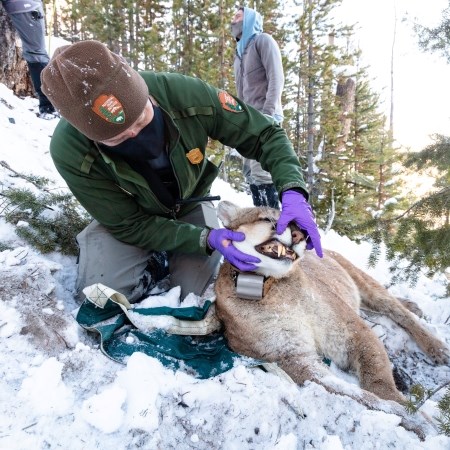
Collaring Cougars
Did you know Yellowstone uses GPS collars to study cougar populations in the park?
During the winter when tracks are easier to follow, employees like Dan will track, dart, take health and body measurements, and place a collar. The data collected helps us learn about their abundance, food and habitat needs, activity patterns, interactions with prey, and how they compete with wolves and bears.
“We’re constantly learning about the cougar’s ecological role in the Greater Yellowstone Ecosystem and how to better coexist with these large, secretive carnivores.” – Dan Stahler, Senior Wildlife Biologist
Learn more about cougars in Yellowstone.
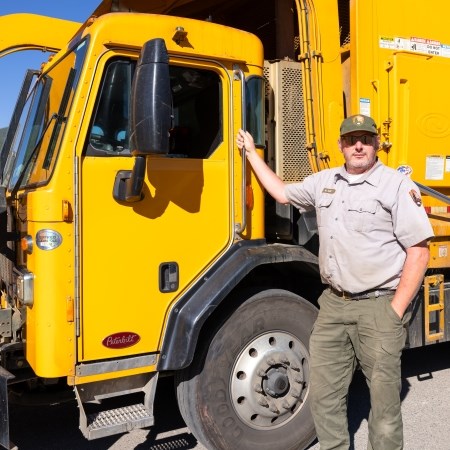
Collecting Solid Waste
Did you know Yellowstone operates three packer trucks to collect solid waste throughout the park?
During the summer, employees like Brian drive 200 miles to collect over 10,000 pounds of garbage every day. Along with our recycling program, we divert about 1,700 tons of solid waste away from the landfill each year.
“I'm guessing Yellowstone is one of the most scenic collection routes in the business. It's fun when people, despite being surrounded by beauty during their visit to the park, want to take pictures of my truck!” – Brian Kay, Engineering Equipment Operator
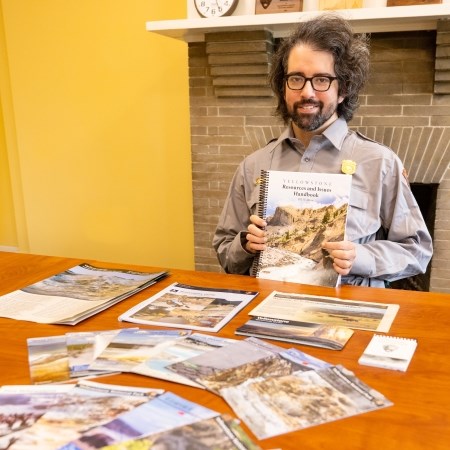
Designing Park Publications
Did you know Yellowstone designs and manages visitor publications?
From the lesser known “Tree Mortality” site bulletin to our popular “unigrid” park map, employees like Miles ensure that visitors to Yellowstone have the information they need to make the most of their trip.
“Between the [roughly] 85 publications we keep updated, we hand out over 2 million copies combined each year. It’s rewarding to be a part of a program that touches nearly every person that visits Yellowstone.” – Miles Barger, Publications Program Manager
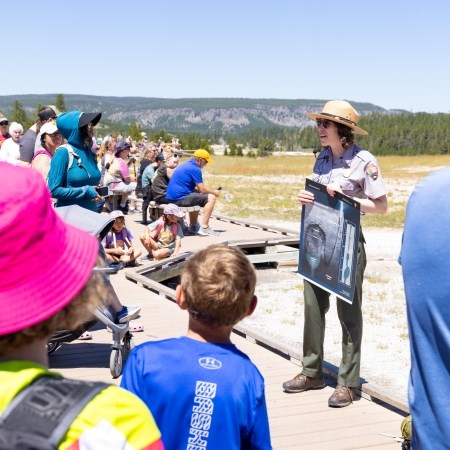
Giving Ranger Programs
Did you know Yellowstone offers a variety of ranger programs at eight locations throughout the park?
To help people connect with and understand the park’s diverse natural and cultural resources, employees like Becky present free public talks and walks to over 250,000 people each year.
"It’s not possible to personally connect with every person who visits the park through a ranger program, but that moment when Old Faithful erupts and thousands of people all gasp in disbelief at once, that brings me joy. We're all connected in that moment.” – Becky Burdoo, Interpretation Ranger
Learn more about Ranger Programs offered in Yellowstone.
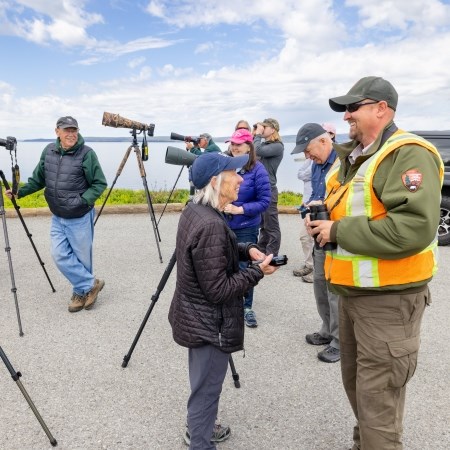
Managing Bear Jams
Did you know Yellowstone manages people viewing roadside bears?
To protect both bears and visitors, employees like Eric spend over 3,000 hours every summer managing nearly 1,000 “bear jams,” a traffic jam caused by people stopping to watch bears.
“Over the years, we’ve learned that bear management is primarily people management. Our goals are to prevent people feeding bears or getting too close, and making sure they can safely view a wild bear in its natural habitat.” – Eric Reinertson, Bear Management
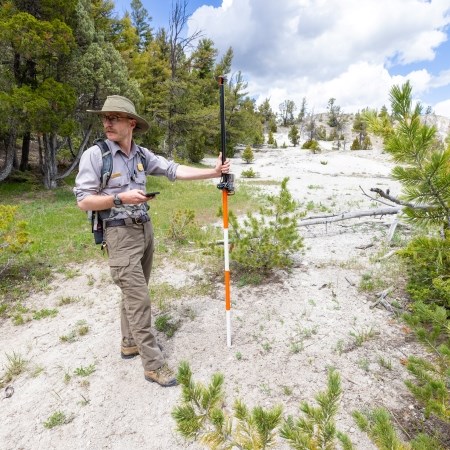
Monitoring Backcountry Sites
Did you know Yellowstone collects data to understand impacts from increased visitation in the backcountry?
Employees like Alex map resource impacts like social trails so park managers have the data they need to make informed decisions about backcountry site management, restoration, and improvements.
“Every visitor has an impact on the park, some larger than others. When you multiply that by thousands of backcountry visits each year, popular areas of the park can be inadvertently loved to death. Monitoring these impacts is the first step towards remediating them." – Alex Zaideman, Backcountry Monitoring Lead
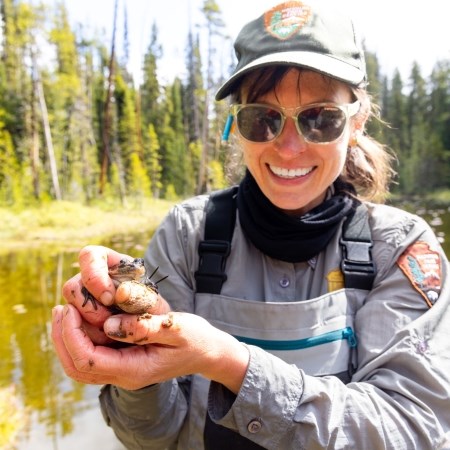
Monitoring Wetlands and Amphibian Populations
Did you know Yellowstone surveys wetlands throughout the park to monitor amphibian populations?
Species like Columbia spotted frogs are an “indicator species” because they are sensitive to ecosystem changes and need shallow ponds for breeding. Employees like Jana document their presence, or lack thereof, to signal larger changes taking place in the Greater Yellowstone Ecosystem.
“They often go overlooked in a park full bears and wolves, but amphibians tell us so much about the health of an ecosystem. They are the canary in the coal mine.” – Jana Cram, Lead Biological Technician, Greater Yellowstone Network
Learn more about the Greater Yellowstone Network's Amphibian and Wetland Monitoring Program.
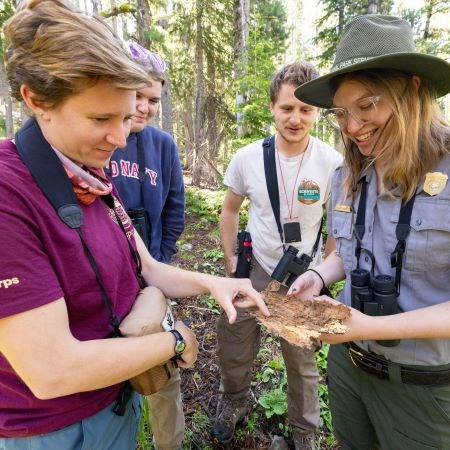
Monitoring Whitebark Pine
Did you know that Yellowstone is an interagency partner of the Greater Yellowstone Ecosystem Whitebark Pine Monitoring Program?
Since 2004, employees like Dani have monitored tree health, recruitment, and its decline across the ecosystem due to ecological effects from nonnative blister rust, native mountain pine beetle, and wildland fire. To inform the restoration strategy for this “Threatened” species, Yellowstone is expanding monitoring to more sites across the park.
“Whitebark pine is important for retaining snowpack to slow spring runoff and its seeds are a key food source for birds like the Clark’s nutcracker and mammals, including grizzly bears. The data we collect will help inform management decisions like intervention, active protection, and possible restoration.” – Dani Yashinovitz, Biological Science Technician.
Learn more about whitebark pine in the Greater Yellowstone Ecosystem.
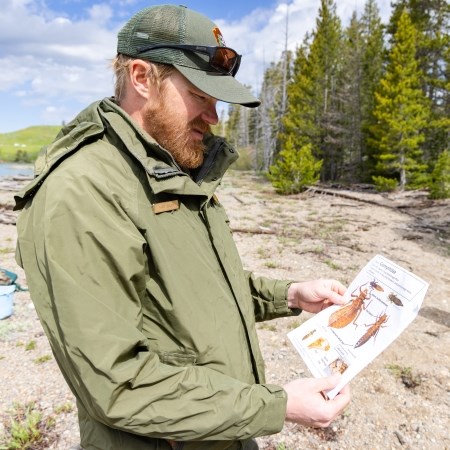
Participating in Community Science
Did you know Yellowstone participates in a nationwide community science study called the Dragonfly Mercury Project?
As predators, dragonfly larvae live and hunt in water for up to five years where mercury can bioaccumulate in them, if present, over time. Employees like Matt coordinate with Yellowstone’s Youth Conservation Corps (YCC) members to collect larvae in the park for mercury analysis.
“Working with YCC on a community science investigation is rewarding. It connects them to places like Yellowstone and exposes them to science careers while providing high-quality data to scientists working to solve real-world problems.” – Matt Ohlen, Education Specialist
Learn more about the Dragonfly Mercury Project.
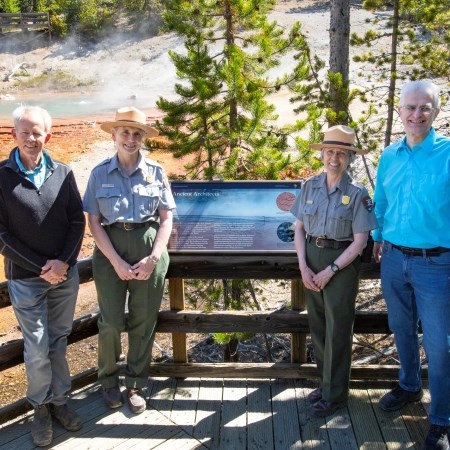
Partnering with Universities
Did you know Yellowstone partners with academic institutions on a variety of research and education projects?
To highlight the years of research on microorganisms that thrive in geyser runoff channels, employees like Virginia and our partners at Montana State University recently developed a new interpretive exhibit at Echinus Geyser supported by funding from the National Science Foundation.
“Norris is one of the most dynamic geyser basins in the park, and we’re excited for this new opportunity for people to learn about an often-overlooked resource. If your travels take you to Norris, don’t forget to stop by the Back Basin and check out the new exhibit!” – Virginia Warner, Media Specialist
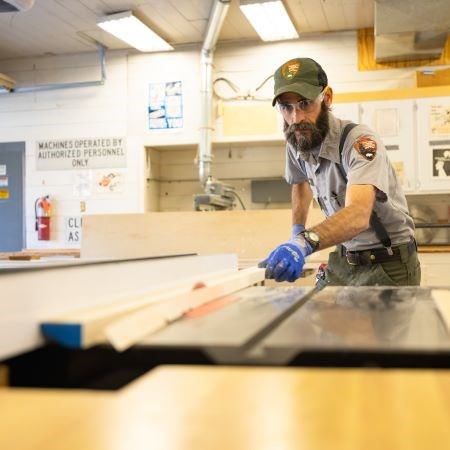
Renovating Historic Homes
Did you know Yellowstone is rehabilitating historic employee housing throughout the park?
As goal three of the park’s employee housing strategy, park craftsmen like Chris work to improve the condition of these structures while maintaining their historic feel.
“I take great pride and responsibility for creating, restoring, and preserving new and old woodwork throughout Yellowstone. Turning these houses into homes for my coworkers is a bonus.” – Chris Lovoy, Cabinetmaker
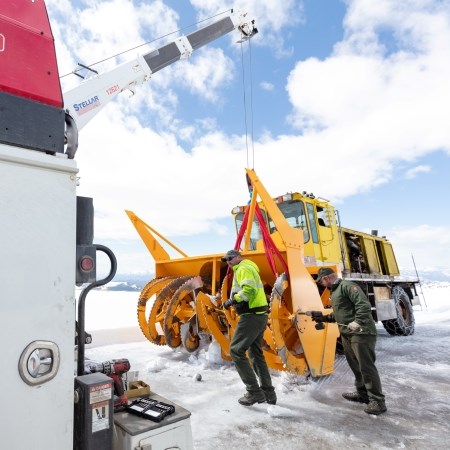
Repairing Heavy Equipment in the Field
Did you know Yellowstone uses a service truck to keep our 153 heavy equipment machines up and running in the field?
With three garages spread out along 452 miles of road, the nearest garage on some job sites can be 75 miles away. That’s when employees like Tucker use the service truck to make on-site repairs.
“Field repairs are time and cost effective. If we can’t fix it on site, it can be a week before we can get the asset back in action. A field repair can make the difference when trying to keep road opening deadlines.” – Tucker Cunningham, Heavy Mobile Equipment Mechanic
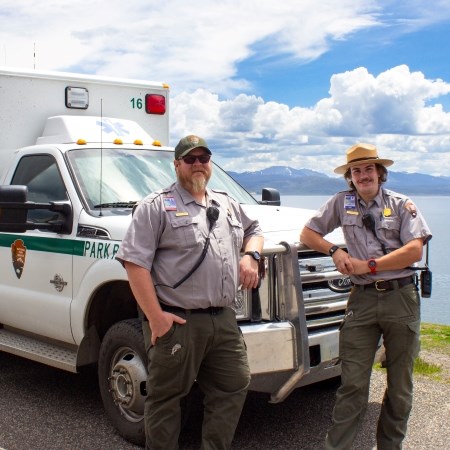
Responding to Medical Emergencies
Did you know Yellowstone operates 11 ambulances stationed throughout eight developed areas of the park?
Each year, employees like Dean respond to over 800 emergency medical calls ranging from motor vehicle collisions to heart attacks.
“Yellowstone is big and remote. It takes coordination with our mutual-aid partners to get our patients to the nearest facility in a timely fashion. It’s a team effort.” – Dean Herrera, Emergency Medical Technician
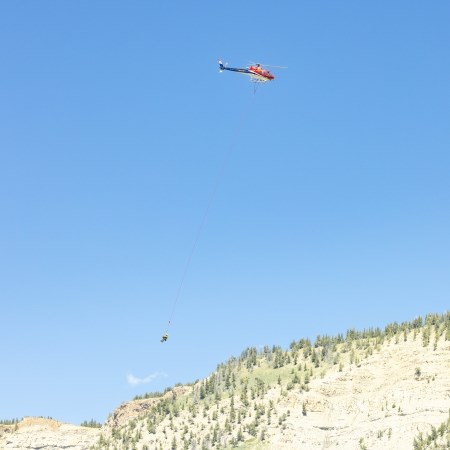
Short-Haul Rescue
Did you know Yellowstone is one of eight national parks with a helitack crew capable of short-haul rescue?
In the event of an emergency and a ground evacuation is dangerous, employees like Angie are trained to rescue people using a special harness while suspended below a hovering helicopter.
“Short-hauling is a tool we’re glad to have, but our hope is that backcountry visitors plan ahead, prepare, and make good choices so we don’t have to share a seat at the end of a 250-foot rope.” – Angie Bealka, Assistant Helitack Supervisor
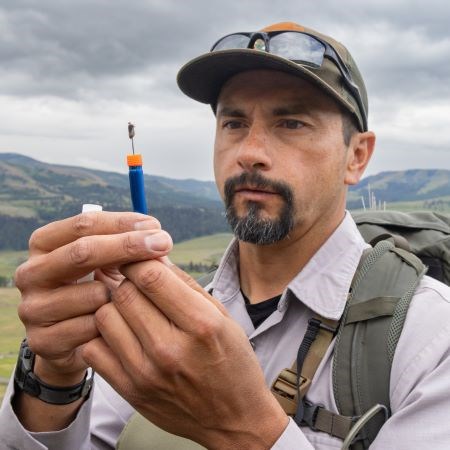
Studying Bison Genetics
Did you know that Yellowstone studies bison genetics?
Starting in 2018, employees like Ramon collect tissue samples from about 100 animals during the mating season. Using a dart gun from a safe distance, specialized punch darts collect a small skin plug and fall to the ground. After the bison walk away, crews collect the dart and prepare the sample for testing.
“Yellowstone is home to the most genetically diverse bison herd in the world. By collecting and analyzing these samples, we’re able to develop management strategies that ensure the herd remains healthy into the future.” – Ramon Perez, Bison Field Crew Lead
Learn more about bison management in Yellowstone.
